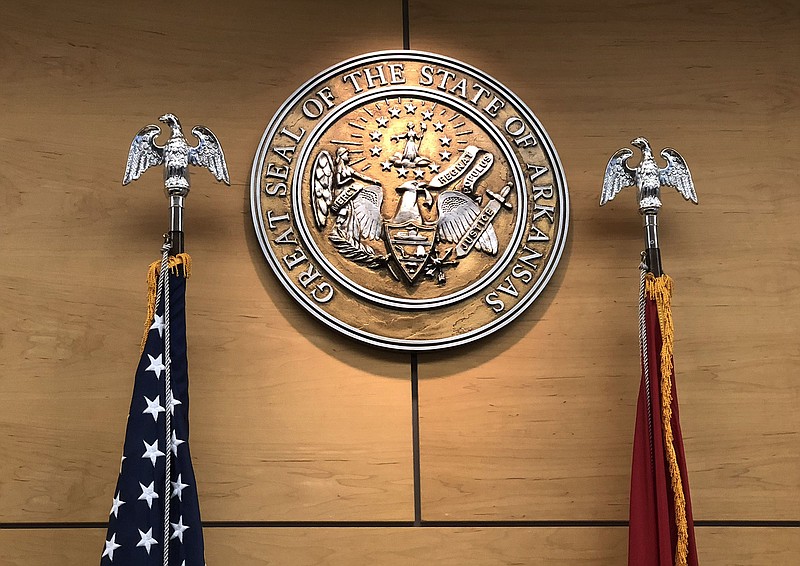The Arkansas Supreme Court opened its fall term in its 187th year with oral arguments in a 27-year-old murder case in which four people were killed in a Pulaski County mobile home.
The plaintiff, death row prisoner Timothy Wayne Kemp, applied last year to his case returned to Pulaski County Circuit Court. The application, written by Assistant Federal Public Defender Julie Vandiver, states that evidence was withheld from Kemp and only released upon federal court order that corroborated his claim to have been threatened with a gun prior to shooting his own weapon.
Vandiver argued the jurors in Kemp's case sentenced him to death after the state convinced them he killed the four in a rage induced by a lover's quarrel.
She said the jury never heard the evidence because the prosecutors suppressed it and it showed Kemp reacted to armed threats. If the jury heard this evidence, Vandiver said it likely would not have convicted Kemp of capital murder, or at the very least would not have sentenced him to death.
"Prosecutors sat silently and let the lie continue," she said during oral arguments that were held using teleconferencing software because of the covid-19 pandemic.
In 1993, police found the bodies of David Wayne Helton, Robert "Sonny" Phegley, Cheryl Phegley and Richard "Bubba" Falls in a Jacksonville mobile home. All four were shot, all but Falls more than once. A surviving victim, Becky Mahoney, was shot but hid in a bedroom closet.
Mahoney later identified her boyfriend, Kemp, as the killer.
In 1994, Kemp was convicted of four counts of capital murder and sentenced to death on each count. The Arkansas Supreme Court in 1996 overturned three of the death sentences, but Kemp was resentenced to death in 1997.
Kemp filed multiple claims in state and federal courts that would be dismissed, but Vandiver said that during the federal trial, Kemp received never-before-disclosed parts of the prosecutor's file that could have changed the case.
Vandiver said the prosecutor's story that Kemp murdered people in cold blood in response to a fight with his girlfriend was only possible through the suppression of evidence. She said the prosecutor hid evidence that supported Kemp's claim that the victims pulled a gun on him first.
"Wayne was planning on a confrontation," she said. "He didn't sneak up on these people. They were planning for him to come back. Helton planned to use that gun to threaten Tim."
Vandiver said Kemp raises four apparently meritorious claims: that Helton had a gun and planned to use it to scare Kemp; a rifle was removed from the crime scene; Mahoney, assisted by the prosecution, received emergency psychiatric treatment during the trial; and the prosecution suppressed evidence that would have impeached witness Bill Stuckey.
Justice Courtney Hudson said she was concerned by the lack of urgency Kemp had shown to present his case to the state Supreme Court, but instead appealed to federal court.
Since this was a death penalty case, Vandiver said Kemp was entitled to try that option and he was concerned that coming before the state court once again would have risked federal review by creating an exhaustion of options situation.
Assistant Attorney General Kent Holt said the amount of time that had passed while Kemp was appealing in federal court was reason enough to dismiss the application. He said Kemp is circling back to state court now because he didn't like the answer he received in federal court.
"Federal courts are generally designed to channel the fact findings to state court," Holt said. "Kemp was aware of this in 2014. They told him that he had available state remedy but he took his chances with a second amendment petition in federal court."
Hudson said it appears that Kemp made a different strategic choice, but it was his choice.
"The case wasn't necessarily languishing," she said. "They were doing something, they just weren't doing it in state court."
Holt also argued claims made by Kemp would have made no difference in the case.
"The evidence in this case was the physical evidence," he said. "There were 12 spent shell casings and 12 bullet wounds in the victims. Every shot fired found a living breathing human being. There was no evidence that any other shot was fired."
Hudson said the argument was about the accumulation of evidence that was made unaware to the defense.
"Mr. Stuckey's criminal history was more serious than presented, the lack of candor in Becky's statement and when you add all these things up it's death by a thousand cuts," she said.
Holt argued that photos at the crime scene never showed a rifle and that Mahoney's mental state wouldn't have been beneficial to the defense.
"The victim witness unit was there to help a person who had witnessed the slaughter of four people," he said. "It would have been very favorable to the prosecution to show the impact on Mahoney had been."
Vandiver, when asked about how the self-defense argument would play out when one of the victims was shot in the back, mentioned this wasn't the crux of their stance.
"I am not sure the jury would acquit him all of these four murders, but it does undermine the capital murder charge," she said. "The evidence speaks more to Kemp's mindset at the time. Testimony shows that he shot off his gun as part of provocation."

